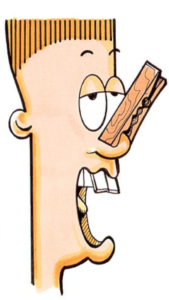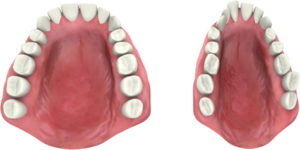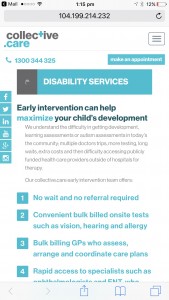Mouth breathing epidemic. And how this simple screening question for kids could prevent adverse effects on facial growth, health, academic performance and prevent behavioural issues
02/16/2017
The vast majority of health care professionals remain unaware of the negative effects of mouth breathing in children on normal facial growth and physiological health. At Australian Allergy Centre and collective.care Allergy/ENT clinics, where I work, we are have decided to proactively reach out to tell patients as well as health care practitioners including general practitioners, specialist groups, private health funds and the government about how we plan to improve acute and chronic disease management of air allergy related disease. Air allergy related disease is huge and predicted to get worse for health.
Unfortunately, even after many years of working as a GP, I was guilty of believing the “oral health check” which is formally part of the 4 year healthy kids check “the blue book” meant opening the mouth to check they were brushing their teeth.
After building collective.care’s first bulk billing multidisciplinary approach to blocked nose involving ENT, allergy, oromyofacial therapists, dentists, orthodontists and speech pathologists, I now have learnt the critical importance of looking in the mouth. Identifying tongue tie, tongue thrust, high arched palates, dry lips, enamel wear-away, crowded teeth, narrow jaws, tonsils size and of course mouth breathing should be part of the oral examination mental check-list for GP’s as should be a simple enquiry about whether the child sleeps with their mouth open or closed.
LET ME EXPLAIN WHY I ADDED THIS SIMPLE QUESTION TO A 4 YEAR HEALTHY KIDS CHECK
Dental professionals have long recognised that children whose mouth breathing is left untreated may develop long, narrow faces, narrow mouths, high palates, dental malocclusion, gummy smiles, and many other unattractive facial features, such as skeletal Class II or Class III facial profiles.
These children also do not sleep well at night due to obstructed airways and this lack of quality sleep can adversely affect their growth and academic performance and many of these children are misdiagnosed with attention deficit disorder (ADD) and hyperactivity.
If mouth breathing was treated early, its negative effect on facial and dental development and the medical and social problems associated with it can be reduced or averted.
Catching mouth breathing early upstream will reduce the cascade of complications presenting to dentists, ENT’s, orthodontists and later schools. The screening question “Does your child mouth breathe?” is now routine in our collective.care medicare rebatable Comprehensive 4 Year Healthy Kids Check, ENT and Allergy Clinics.
HINT: Rather than “does your child suffer from a blocked nose?” try asking about mouth breathing instead and note how parents do not recognise blocked nose as readily as open mouth breathing

WE BREATHE THROUGH THE MOUTH WHEN THE NOSE IS BLOCKED
Mouth breathing remains grossly unnoticed and even more unrecognised is the domino effect of complications on kids health. While snoring is well recognised risk factor to health mouth breathing is not despite the evidence. There seems to be a lack of awareness that mouth breathing is not normal.
Although there are two breathing routes, the mouth and the nose, humans should normally breathe through the nose which was designed for breathing and smell; warming and humidifying air and trapping particles to avoid them entering our lungs. A child will be forced to mouth breathe often because of allergic rhinitis, adenoidal hypertrophy, adenoidal hypertrophy with allergic rhinitis and/or has functional mouth breathing problems. That may become their normal but it is far from normal nor are the arising complications.
MOUTH BREATHING CAUSES SERIOUS PROBLEMS
The consequence of mouth breathing is an adaptation of the entire facial musculature, which causes changes in the dental arches, position of the teeth, leading to structural alterations in the face including lips, tongue, palate and mandible as these structures adapt to the new breathing pattern.

Mouth breathers generally present with habitual open lips rest posture, low and forward tongue rest posture and lack of adequate muscle tone.
Poor posture also develops and research all points to open mouth breathing children leads to serious effects on the growth and development of the jaw and face with altered tongue positioning.
Children who mouth breathe have narrow high arched palates, small underdeveloped top jaws and subsequently display a narrow facial structure, overcrowding of teeth and jaw misalignment. These dentofacial changes often require orthodontic work such as maxillary expanders. While maxillary expanders are becoming increasingly common in children what is often neglected is finding the root cause of these palatal abnormalities in mouth breathing and communicating this back to the GP’s.
A team approach with dental professionals, allied health, ENT, allergists with General Practice is long overdue. Typically adenoidal hypertrophy and allergic rhinitis are the commonest cause of nasal obstruction in children and allergy is a potential modifiable risk factor.
In summary, mouth breathing risks children developing:
craniofacial growth abnormalities
dental and orthodontic problems
poor posture
reduced exercise capacity
sleep disordered breathing
fatigue
worsening of asthma
dry mouth, reduced saliva and halitosis
academic performance well below potential
WATCH FOR HAYFEVER – A SILENT CAUSE OF MOUTH BREATHING
In our modern environment, 1 in 5 Australians now report rhinitis (inflammation of the nose) caused by the global increase in air allergies which is compounded by air pollution and climate change.
Chronic allergic rhinitis obstructs the upper airway forcing many allergic kids to breathe through the mouth. This switch from nasal breathing to mouth breathing silently occurs, often at night whilst sleeping and will go unnoticed by health professionals, and often the patients or parents, unless you ask! Remember the simple question “Does your child breathe through the mouth at night?”
The silent epidemic of mouth breathing is now a cause for serious public health concern. It is being recognised that this nasal obstruction is a potential risk factor for sleep-disordered breathing and by day, may give rise to symptoms similar attention deficit hyperactivity disorder (ADHD) in children. Relationships have also been reported between mouth breathing and dry mouth, chewing abnormalities, malocclusion, chewing abnormalities, tooth caries, periodontal disease and halitosis.
The growing association of mouth breathing in allergic children and its relationship to dentofacial development is one for concern and we really need more studies evaluating the effectiveness of early interventions in preventing these growth alterations.
Saving money for parents on expensive orthodontic work is not the only incentive to examining the cause for kids who mouth breathe. Children who mouth breathe may require air allergy testing, rhinomanometry (to assess blocked nose) and nasoendoscopic examination of the nasopharyngeal airway to identify adenoidal hypertrophy, allergic rhinitis or deviated nasal septum and very likely to need orthodontic and oromyofacial expertise. General Practitioners are therefore in the perfect position to co-ordinate this type of care and facilitate this through proper use of chronic disease management plans involving team care arrangements.
TAKE HOME POINTS
Use this simple screening question “Does your child breathe through the mouth at night?” rather than “Does your child have a blocked nose?”
Mouth breathing is a pathology and not a variant of normal and warrants a comprehensive oral examination.
GP’s are in the best position to screen for mouth breathing and perform a oral check at the 4 year healthy kids check.
Allergic rhinitis, adenoidal hypertrophy and functional mouth breathing are the commonest causes for mouth breathing.
If you are a GP and want to learn more, YOU CAN! collective.care offers accredited GP special skills training programs for Allergy, ENT, Skin, Cosmetics and Laser for nurses, doctors and allied health professionals – industry expert training programs. info@collective.care
If you are a patient and want to be treated – I recommend trying the special skills Allergy/ENT Clinic at collective.care, where I work. Our GP’s are trained to comprehensively examine for allergies and medicare rebatable air allergy skin prick testing as well most of the necessary checks before seeing a specialist. call 1300 325 344 for appointments in our Wollongong, Bella Vista and Edgecliff collective.care centres.

Author: Dr Suzan Bekir – GP.
MBBS FRACGP
and co-creator for Australian Allergy Centre and collective.care Allergy/ENT clinics.
references:
Page D and Mahoney D. 2010. The airway, breathing and orthodontics. Todays FDA 22,2:43-47.
Jefferson Y. Mouth breathing:adverse effects on facial growth, health, academics and behaviour. Gen Dent. 2010 Jan-Feb;58(1):18-25
Breslin D, Shaprior PA et al. Mouth breathing in allergic children: its relationships to dentofacial development. Am J Orthod. 1983 Apr; 83 (4):334-40.
D’amoto et al. Meteorological conditions, climate change, new emerging factors, and asthma and related allergic disorders. A statement of the World Allergy Organization. World Allergy Organ J. 2015 Jul 14;8(1):25. doi: 10.1186/s40413-015-0073-0. eCollection 2015.
Young T et al. Nasal Obstruction as a risk factor for sleep-disordered breathing. The university if Wisconsin Sleep and Respiratory Research Group. J Allergy Clin Immunol. 1997. Feb; 99(2): S757-62
Harari D et al. The effect of mouth breathing verses nasal breathing in dentofacial and craniofacial development in orthodontic patients. Laryngoscope. 2010. Oct; 120 (10)2089-93.
Finkelstein Y et al. Anatomical basis of sleep-related breathing abnormalities in children with nasal obstruction. Arch Otolaryngol Head Neck Surg. 2000 :126:593-600
Junquiera P. Speech-language pathology findings in patients with mouth breathing: multidisciplinary diagnosis according to ethology. Int J Orofacial Myology. 2010 Nov; 36:27-32.
Flutter, J 2006. The negative effects of mouth breathing on the body and development of the Child. International Journal of Orthodontics 17,2:31-37.
Sinha, D et al. Sleep Disordered breathing in children. Indian Journal of Medical Research 131,1:311-320. Accessed March 17, 2016.